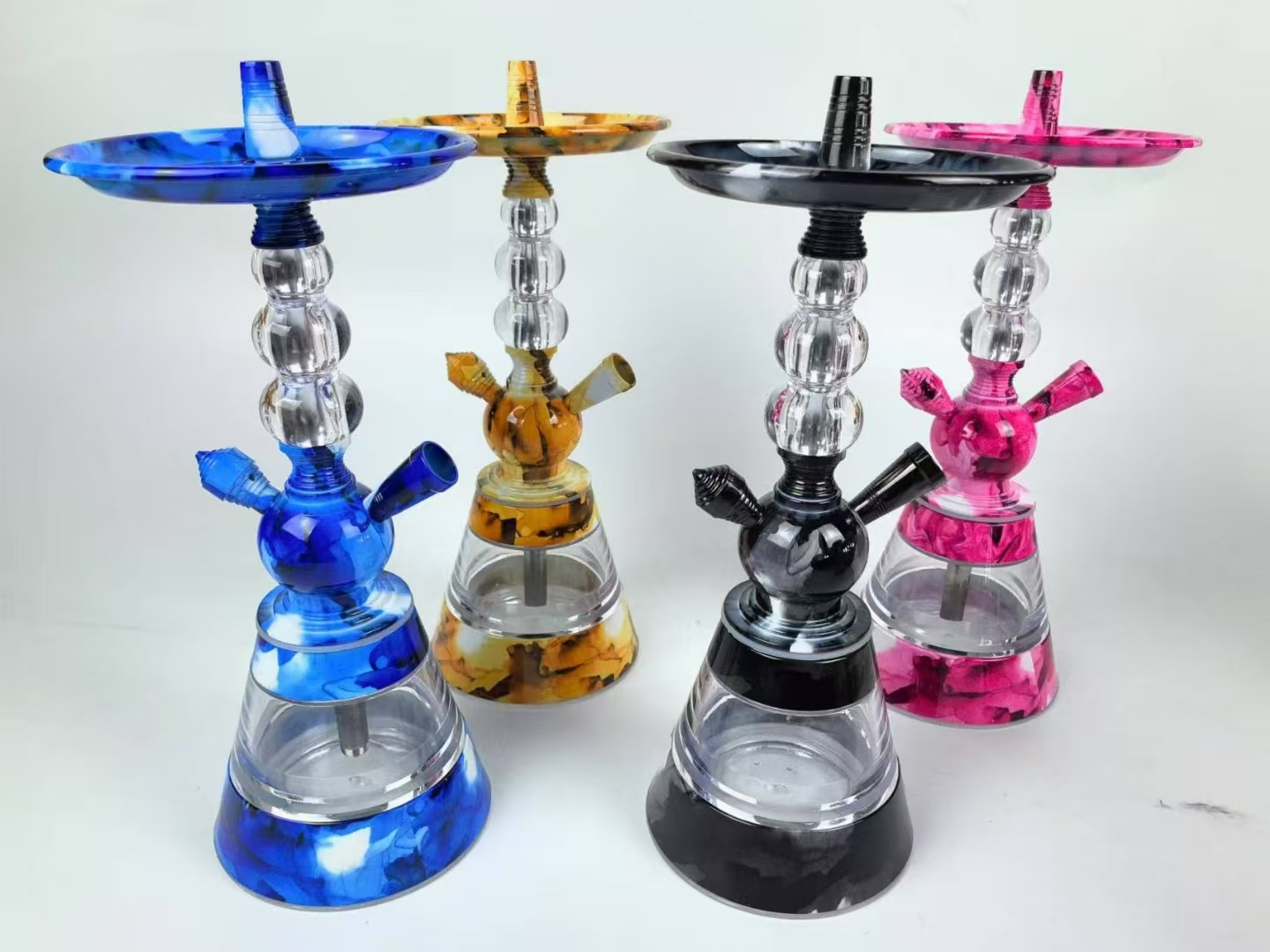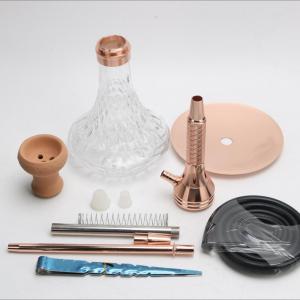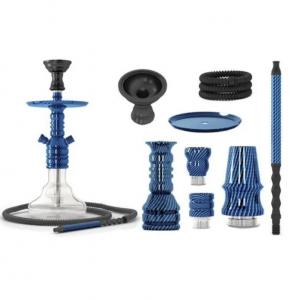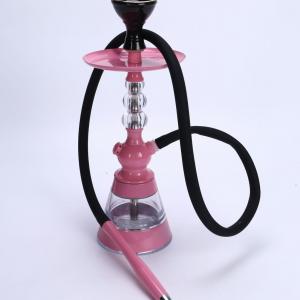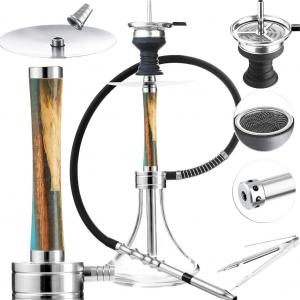Hookah Sets: A Comprehensive Introduction
1. Definition and Origin
- Definition: Hookah Sets, also known as water pipe sets, are smoking devices used to consume tobacco through a water-filled vessel. They are typically made of ceramic, glass, metal, or wood and consist of a water-filled container, one or more smoking tubes (stems), and a mouthpiece (hose).
-
Origin:
- Originating in the 16th century during the Mughal Empire in India, hookah sets later spread to Persia (modern-day Iran), Turkey, and Egypt.
- Initially crafted from coconut shells and hollow bamboo, they were used to smoke traditional dark tobacco. Over time, they evolved into more elaborate and refined instruments.
- In the Middle East and North Africa, hookah sets became significant symbols of social interaction, culture, and status.
2. Components
A complete hookah set usually includes the following parts:
- Vase (Base): A water-filled container, often made of glass, ceramic, or metal, and decorated with intricate patterns.
- Stem (Body): The pipe connecting the vase to the hose, commonly made of metal or wood, sometimes gilded or engraved.
- Hose (Pipe): A flexible tube for smoking, usually made of rubber or silicone, available in various lengths and colors.
- Bowl (Head): A ceramic or metal container for holding tobacco, featuring small holes for airflow.
- Tray (Ash Tray): A plate for placing burning charcoal, preventing ashes from falling into the vase.
- Accessories: Such as tongs (for handling charcoal), cleaning brushes, and sealing rings.
3. How to Use
- Prepare Tobacco: Place hookah tobacco (often flavored with fruits or mixed flavors) in the bowl and gently pack it.
- Light Charcoal: Ignite charcoal tablets and, once they're covered with a layer of ash, place them on the bowl using tongs.
- Smoke: Gently inhale through the hose. The smoke passes through the water in the vase, resulting in a smooth and flavorful experience.
- Share and Pass: In social settings, hookah sets are often shared among multiple people, with the hose passed around in order.
4. Cultural Background and Social Significance
- Social Tool: In the Middle East, North Africa, and parts of Asia, hookah sets are an indispensable part of social gatherings and leisure activities. People gather around to smoke and converse, fostering camaraderie.
- Traditional Custom: In some cultures, offering a hookah set is seen as a sign of respect and trust from the host. Refusing to smoke may be considered impolite.
- Art and Decoration: Hookah sets are often crafted as works of art, adorned with traditional motifs, gemstones, or metal engravings, reflecting the owner's taste and cultural heritage.
5. Modern Design and Trends
- Diverse Materials: Contemporary hookah sets are made from a wider range of materials, including glass, crystal, stainless steel, and wood, catering to diverse consumer preferences.
- Innovative Styles: Designs incorporate modern elements such as LED lighting, rotating bases, and adjustable heights, adding fun and visual appeal to the smoking experience.
- Global Popularity: With globalization, hookah culture has gained popularity worldwide, particularly among young people, becoming a trendy lifestyle choice.
- Health Controversy: Despite being perceived by some as a "milder" alternative to cigarettes, studies show that long-term hookah use still poses health risks, potentially increasing the likelihood of respiratory and cardiovascular diseases.
6. Precautions
- Moderate Use: It is advisable to control the frequency and duration of smoking to avoid excess.
- Hygiene: When sharing, consider using disposable mouthpieces or cleaning the hose regularly to prevent the spread of germs.
- Compliance: Be aware of local regulations regarding hookah use, as it may be restricted in some areas.
Conclusion: Hookah Sets are more than just smoking devices; they are cultural icons and social mediators. Carrying rich historical and cultural connotations, they remain popular in modern society. Whether for experiencing traditional charm or pursuing fashion trends, hookah sets offer a unique recreational experience.
